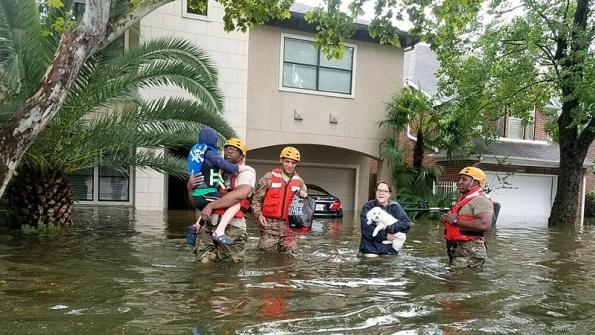EPA opens $2B in funding for climate resilience, environmental justice projects
In the national push toward climate resilience, investing in a way that’s equitable for everyone is an important consideration—and one the federal government is currently prioritizing. The Environmental Protection Agency (EPA) recently opened about $2 billion in funding to support community-driven projects that deploy clean energy, strengthen climate resilience, and build capacity for communities to tackle environmental and climate justice challenges.
“For far too long, communities that have borne the brunt of power plant and industrial pollution have been left out and left behind,” said John Podesta, senior advisor to the president for clean energy innovation and implementation in a statement. “The Inflation Reduction Act and President Biden’s Justice40 initiative change that by bringing new investment, clean energy, and good-paying jobs to disadvantaged communities.”
All of the grants will benefit disadvantaged communities historically marginalized by underinvestment and overburdened by pollution, the statement says. The program also dedicates $200 million via the Inflation Reduction Act forr technical assistance to applicants and grant recipients. The assistance is intended to help disadvantaged communities access resources for environmental and climate justice initiatives.
Projects awarded through the grants are expected to fall under the following categories: Climate resilience and adaptation; mitigating climate and health risks from urban heat islands, extreme heat, wood heater emissions, and wildfire events; community-led pollution monitoring, prevention, and remediation; low- and zero-emission and resilient technologies and related infrastructure; workforce development that supports the reduction of greenhouse gas emissions and other air pollutants; reducing indoor toxics and indoor air pollution; and facilitating the engagement of disadvantaged communities in state and federal advisory groups, workshops, rulemakings, and other public processes.
“We are investing in locally-driven solutions to make a positive difference for communities that have suffered from pollution, underinvestment, and decades of disproportionate environmental impacts,” said White House Council on Environmental Quality Chair Brenda Mallory. “Investments like these show how we are delivering on the president’s ambitious environmental justice agenda and his commitment to build more equitable and resilient communities for generations to come.”
Applications will be accepted and reviewed by the EPA on a rolling basis, closing Nov. 21, 2024, although early applications are encouraged. Logistically, the application process is set up so that if an application isn’t initially accepted, applicants can utilize technical assistance and then resubmit. Applications can be submitted under two tracks, with the first (Community-Driven Investments for Change) expected ot award about 150 projects with between $10 to $20 mill each, for a total investment of $1.96 billion. The second (Meaningful Engagement for Equitable Governance) is expected to award about 20 projects $1 to 3 million each, for a total of approximately $40 million.
The EPA has identified five Target Investment Areas (TIA) to help ensure communities with unique circumstances, geography, and needs can equitably compete for funding.
These areas include $150 million for projects benefitting Indian tribes in Alaska including funds for cleanup of contaminated lands, and $300 million for projects benefitting tribal communities in the other states. Another $50 million has been slated for projects benefitting disadvantaged communities in the United States’ territories of Puerto Rico, the Virgin Islands, Guam, American Samoa, and the Northern Mariana Islands, and $50 million will go toward projects benefitting small and rural areas that lack fixed, legally determined geographic boundaries.
For more information, visit the EPA’s website.




















